Ohio Solar Rebates and Incentives
How Much Can You Save on Solar in Ohio?
Key Details
- Ohio residents with solar installations can take advantage of the 30% federal solar tax credit.
- Net energy metering allows customers to export excess energy in exchange for credits.
- Ohio offers a property tax exemption for qualifying renewable energy projects over 250 kW.
- State sales taxes are waived on select solar equipment.
Ohio Energy Profile
Ohio receives almost 4,000 kilojoules of sunlight per square meter (kjm^2) on average every year, among the lowest in the US. It also ranks 38th in the US in terms of total sunlight hours received, with an average of 2100 sunlight hours annually.
As of 2023, Ohio had 231 solar companies, providing just under 7,500 solar jobs. Of these 231 solar companies, 83 are manufacturers while 69 are developers and installers.
In 2022, Ohio generated up to 927 megawatts of solar energy, enough to power 110,827 homes. It ranked 26th regarding the total amount of solar energy installed.
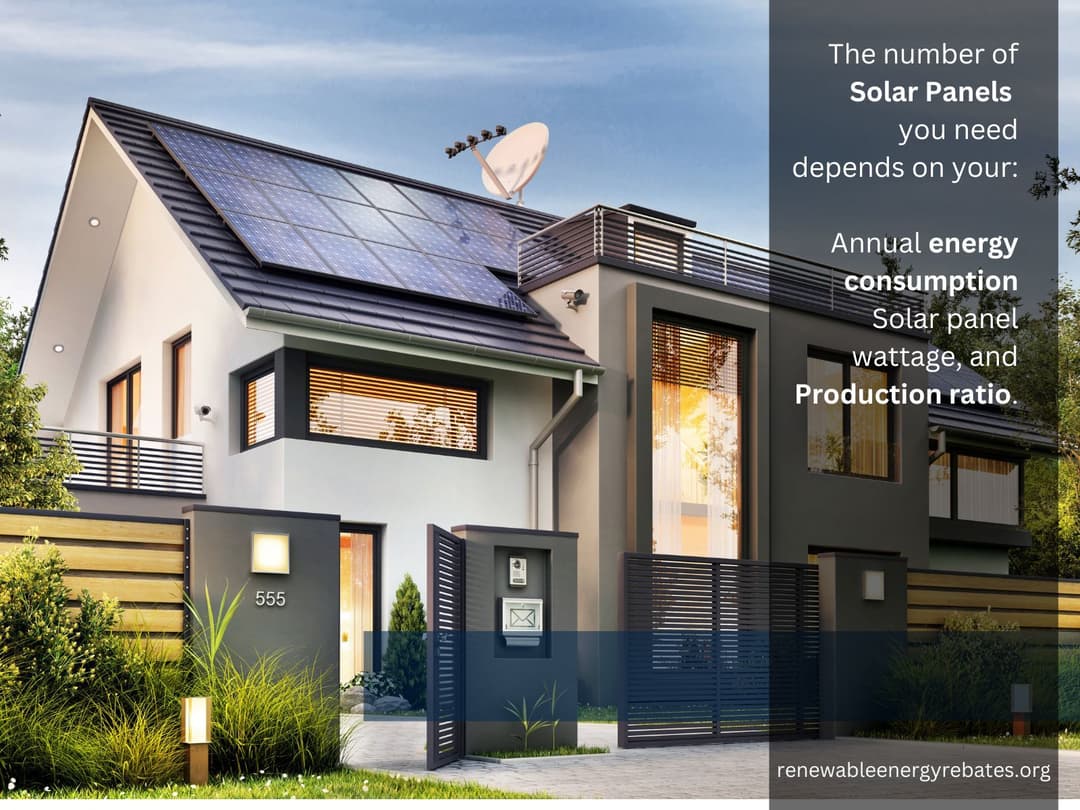
Ohio Solar Tax Credit and Incentives at a Glance
| Ohio Solar Incentives | State or Federal | Program Overview |
| Federal solar tax credit | Federal | Provides a 30% credit on the total value of your system toward your income tax burden. |
| Net Metering | Local | Gives you credit for any excess energy you produce. Future utility costs can be offset with these credits. |
| Solar Sales Tax Exemption | State | Exempts all solar equipment from sales tax. This includes solar panels, inverters, and batteries. |
| Solar Renewable Energy Credits (SRECs) | State | Allows you to accumulate credits for all solar generation that can be sold for profit on the local SREC market. |
| Qualified Property Tax Exemption | State | Solar system owners and lessees may be eligible for exemptions from paying property taxes on their renewable clean energy initiatives. |
| Energy Conservation for Ohioans (ECO-Link) Program | State | Lowers interest rates for solar loans by up to 3% |
| Ohio Property-Assessed Clean Energy (PACE) Financing | Local | Provides readily available and affordable PV loan choices, with tax payments. |
Ohio ranked 4th in solar energy growth projection across the US in 2023. Solar energy generation is also expected to grow by 8,252 MW over the next 5 years.
How Affordable is Electricity in Ohio?
In Ohio, the retail cost of grid electricity, on average, is 9.67 cents per kilowatt hour. In comparison, the average cost of solar panels per watt in Ohio is $2.50.
| State | Number of solar Installations | MW Installed | Average cost for grid power (2021) | Average cost per watts |
| Ohio | 14 | 927 | 9.67 cents/kWh | $2.50 |
It takes $14,400 to install a 6kW solar system in Ohio. However, with the federal solar tax credit, homeowners looking to install a solar system can save up to $4,320.
| State | Cost of installing a 6kw system | Federal tax credit value 2021 (22%) | Federal tax credit value 2023 (30%) |
| Ohio | $14,400 | $3,168 | $4,320 |
Federal Solar Tax Credit in Ohio
The Federal Solar Tax Credit is a renewable energy incentive designed to increase solar energy use in the US. It provides a 30% tax credit on the total cost of a solar installation. It is also often called the solar Investment Tax Credit (ITC).
| State | Cost of installing a 6kw system | Federal tax credit value 2021 (26%) | Federal tax credit value 2023 (30%) |
| Ohio | $14,400 | $3,744 | $4,320 |
Since the tax credit’s inception in 2006, the solar industry has expanded at a rapid rate, growing by 33% each year on average.
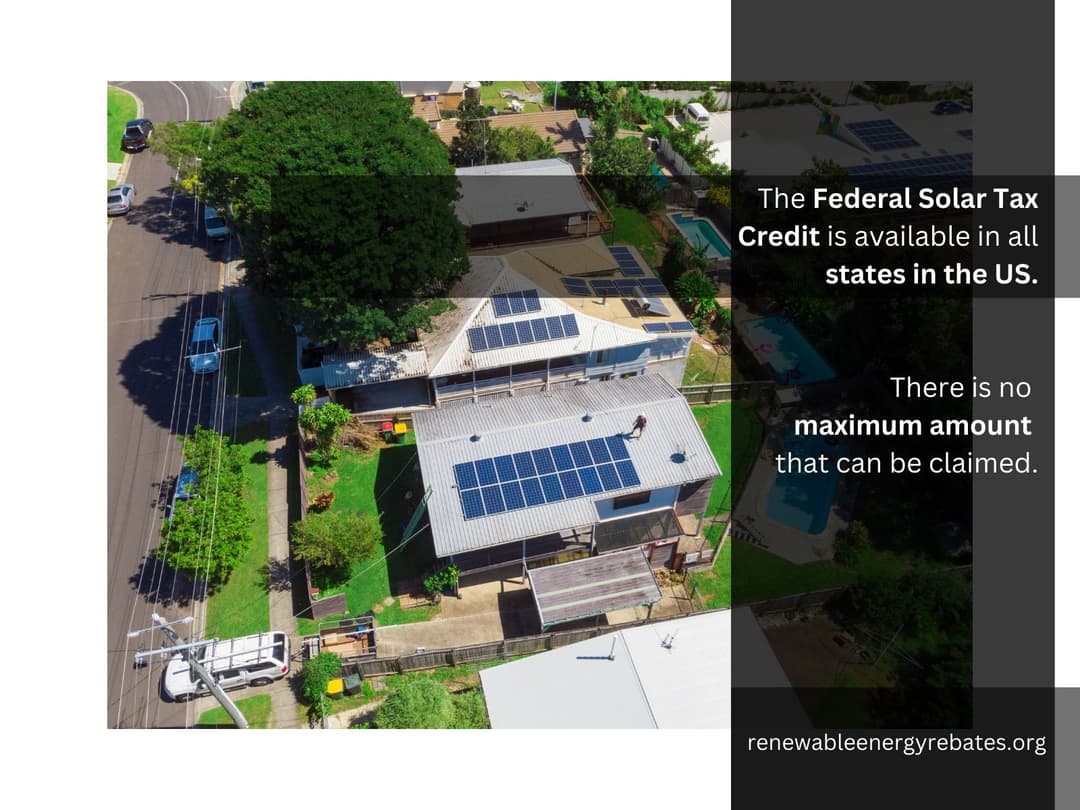
Additionally, it has aided in the creation of hundreds of thousands of jobs with solar jobs increasing by 9% in 2021.
Federal solar tax credit timeline:
- 2016-2019: The solar tax credit was set at 30% of the system's cost.
- 2020-2021: New owners of residential and commercial solar systems will be able to deduct 26% of the total cost of their systems from their federal income taxes.
- 2022-2032: Homeowners who install solar energy systems between 2022 and 2032 are qualified to offset 30% of the system's cost from their taxes.
- 2025: The U.S. Department of Treasury will make a decision on whether or not to continue the solar tax credit for commercial systems in 2025. Commercial solar systems, however, will continue to be eligible for 30% tax credits up until that time.
- 2033: Residential solar system owners will be able to deduct 26% of the system's installation costs from their taxes starting.
- 2034: Residential solar system owners will be able to deduct 22% of the system's construction costs from their taxes starting.
- 2035: The federal solar tax credit for residential solar energy installations will be eliminated.
The federal solar tax credit has no income limitations. Taxpayers in all income brackets are eligible to apply.
As of 2023, the tax credit covers the following costs:
- Photovoltaic modules or cells.
- Costs for hiring a contractor to prepare the site location or assemble new equipment.
- The developer's fee, inspection fees, and permit fees.
- Batteries, inverters, mounting hardware
- Energy storage units with a 3 kWh capacity rate or more.
- Sales tax on permissible expenses
Eligibility
The following conditions must be met in order to qualify for the photovoltaic tax credit in Ohio.
- You are qualified for the federal solar tax credit if your solar system is new or if you use it for the first time between January 1, 2006, and December 31, 2023.
- You must own your solar energy system entirely.
- You must place your solar energy system in the US. The solar system must either be located at your primary or secondary residence in the US. The system may also be situated at an off-site location.
How do I claim the Federal Solar Tax Credit in Ohio?
Claiming your federal solar tax credit is relatively simple. It only takes a few minutes and you can finish it along with your tax return.
Follow these quick steps to apply for the federal tax credit for solar energy in Ohio:
Step 1. Go to the Internal Revenue Service website and print the IRS form 5695
Step 2. Fill out all the required details about your solar energy system, your house, and your provider.
Step 3. You have two choices for filing the paperwork: you can mail it to your accountant or do it yourself.
Net Energy Metering in Ohio
Net metering is a billing system that allows homeowners to sell excess energy. Any excess electricity not immediately consumed by the customer is sent back to the grid. This is useful in cases where it is cloudy outside or at night when you need more energy than you produce.
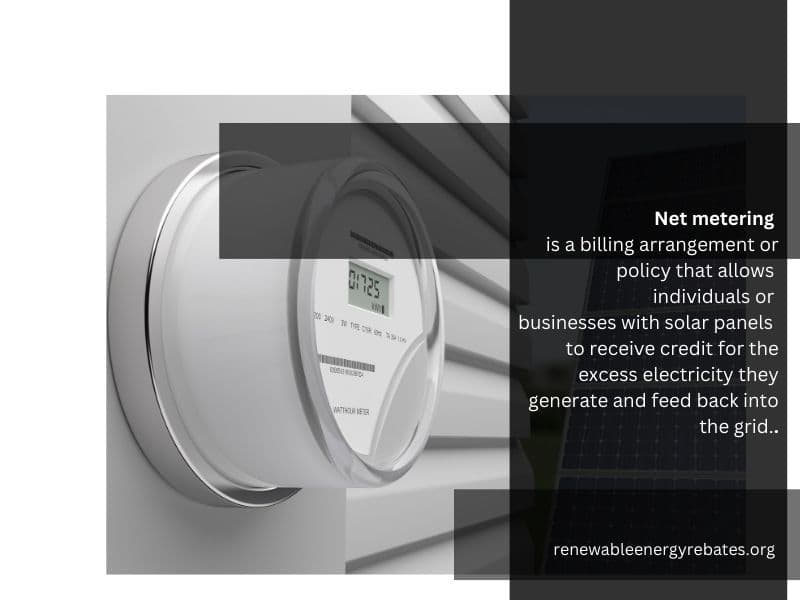
With net metering, customers in Ohio have the chance to:
- Improve the worth of their solar panels which increases the valuation of their home.
- Pay off the cost of their solar energy system.
- Make long-term savings.
- Make the most of their electricity savings.
Individuals who produce their own energy and transmit the excess back into the grid are referred to as customer-generators. For any additional energy the customer-generator sends to the grid, they are usually compensated per kilowatt-hour (kWh). There are various levels of compensation that apply in various locations depending on the state and local regulations that are currently in effect.
At the conclusion of the billing term, electricity charges and credits for electricity exported by customer-generators are netted off of one another. If a customer-generator imports more energy than they export, the discrepancy will be charged to their account. If exports during a billing cycle are higher than the quantity of energy taken from the grid (net surplus), the customer recieves credits.
Customer-generators typically have the option to carry over the excess to consecutive billing cycles. How this is handled depends on state policy at the time.
All investor-owned utilities (IOUs) and utility cooperatives in Ohio are mandated to implement net energy metering, according to the Public Utilities Commission (PUC). It does not, however, state a credit rate. As a result, most utility companies provide an avoided-cost rate for excess output, which is less alluring but nonetheless beneficial.
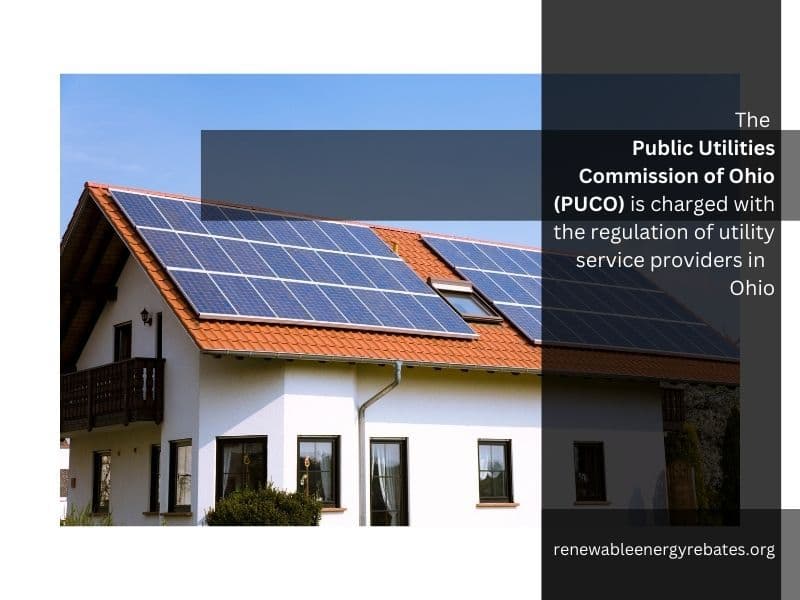
How to Enroll for Net Energy metering in Ohio
To sign up for net energy metering, homeowners must first confirm their eligbility with the utility company.
To confirm if you qualify for net metering, follow the steps below:
Step 1: Speak with your electricity provider to ascertain that your house is equipped with a bi-directional meter. This is needed for interconnection, which enables you to participate in net metering.
Step 2: Request that your electricity provider implement one if you do not have a bi-directional meter. Note that this installation should come at no extra cost. As part of the installation procedure, your solar company will submit an application on your behalf.
Step 3: Although it is not required, it is a good idea to keep an eye on your energy expenses for a few months after installation to make sure your energy credits are registering. Your electricity bill should show significantly reduced net usage or clearly state the amount of energy your solar panels saved during the billing period.
Ohio Property Tax Exemption
In 2010, Ohio passed Senate Bill 232 which removed public utility tangible personal property taxes and real property taxes on qualified energy projects. This tax exemption is referred to as the Renewable and Advanced Energy Project Property Tax Exemption. Prior to the enactment of the tax exemption, an Ohio renewable energy facility that supplied electricity to a third party was considered a public utility for the purposes of taxation.
If a project is 5 MW or more, local county commissioners need to authorize the property tax exemption. These local county commissioners are permitted to demand extra payment, provided that the total amount does not surpass $9,000 per MW.
The law also stipulates that the renewable energy facility must meet certain job-creation standards, fix roads (for projects of 5 MW or more), give local first responders training and equipment (for projects of 5 MW or more), form partnerships with universities (for projects of 2 MW or more), and make offers to sell renewable energy credits to Ohio utilities interested in purchasing them.
To be eligible for the property tax exemption, a renewable energy facility must:
Apply to the Ohio Development Services Agency (ODSA) for designation as a "qualified energy project" to be eligible for the property tax exemption.
Be brand-new, have a nameplate capacity of more than 250 kW,* start development between January 1, 2009, and January 1, 2016, and provide regular updates to the ODSA on its progress.
Be operational before January 1, 2022, and applications must be submitted to ODSA by December 31, 2020.
As long as approved renewable energy facilities abide by the aforementioned property tax exemption requirements, they are eligible for a lifetime exemption from property taxes. For more details, implementation papers, program documents, and the application go to the ODSA website.
Energy Conservation for Ohioans (ECO-Link) Program
The ECO-Link program helps lower solar loan financing costs, making renewable energy eventually more accessible and affordable for Ohio residents.
It provides interest rate reductions of up to 3% on 5-year loans up to $25,000 or 3% rate reductions on 7-year loans between $25,000 and $50,000. To participate in the ECO-Link initiative and obtain more affordable financing for your solar project, just follow these steps:
Step 1: Find a PV loan provider that participates in the scheme. You can get in touch with the Ohio Treasurer's Office to get a roster of approved financiers.
Step 2: Express your interest in the program to your financier. The program administrator will receive the necessary paperwork from the lender along with the online registration.
Step 3: It will be communicated to you if your application for the loan program has been approved. During this final step, you can continue with your installati and your lender will take care of the extra paperwork needs.
Ohio Property-Assessed Clean Energy (PACE) Financing
Ohio's Property Assessed Clean Energy (PACE) financing is aimed at funding renewable energy and energy efficiency projects. PACE financing allows for the use of special assessments to secure and repay upfront funding for energy-saving or energy-generating improvements.
Your monthly loan payment will be added to your tax statement for simple repayment. In general, this is only advised for homeowners who intend to stay in their houses for at least the next 15 to 20 years because it can reduce your home's value to buyers and make it more difficult to sell.
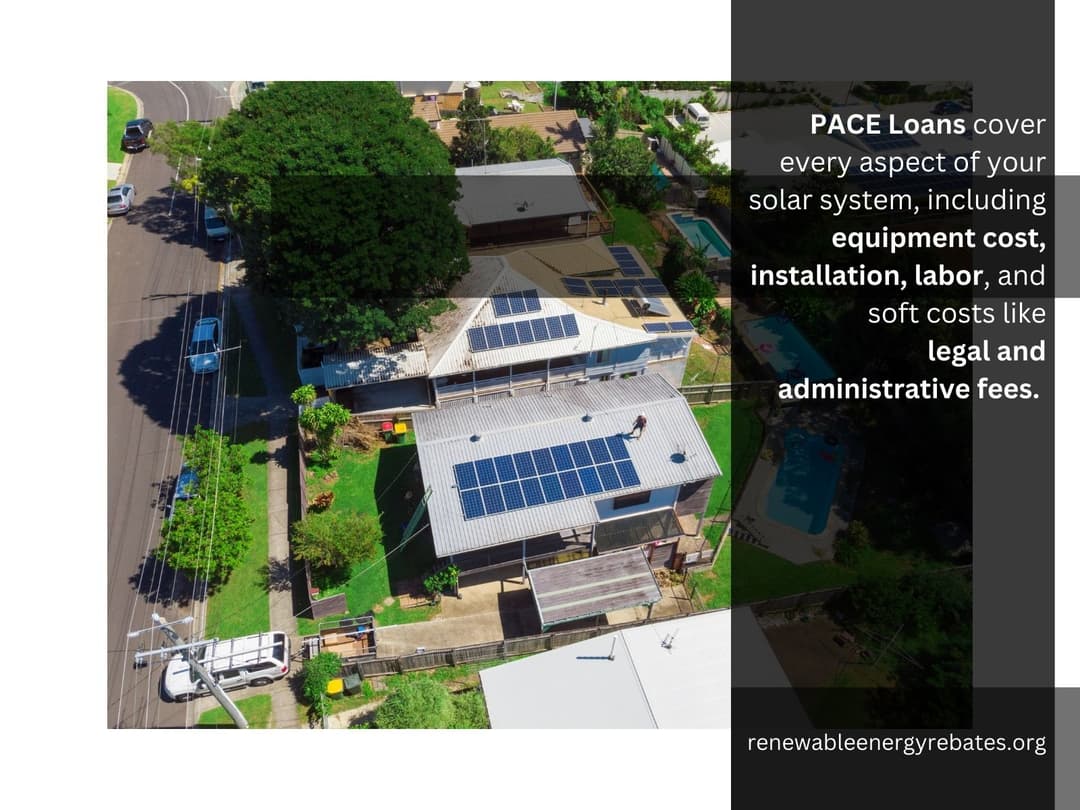
State Sales Tax Exemptions in Ohio
All sales taxes on solar equipment, including panels, inverters, solar batteries, electric car chargers, and more, are waived by the state of Ohio. As a result, solar cells are less expensive up front and renewable energy sources are generally more affordable.
Given the average system cost of $23,040 and the state sales tax rate of 5.75%, you can anticipate saving $1,325 thanks to this solar tax relief.
Ohio Household Profile
Ohio is a relatively high energy-consuming state, using 288.7 million BTUs of energy per capita yearly. This places it 24th out of all the US states. Ohio also ranks 21st among the states in terms of residential energy consumption per capita with a total consumption of 72.0 million BTUs. On the other hand, the state's commercial sector, uses about 53.7 million BTUs annually, ranks 25th in the US for energy consumption.
Ohio is also quite populous having a population of 11,769,923 people, with a typical age of 39.4. 49.28% of these are men, and 50.72 % are women. In Ohio, there are 5,232,733 housing units, with 1969 as the typical year of construction. 66.59% of Ohio's 4,754,161 occupied housing units are owner-occupied, while 33.41% are filled by renters.
The typical price of a home with a mortgage is $169,200, and mortgage-purchased homes make up 62.28% of all units. In Ohio, average monthly housing expenses are $930. In Ohio, there are a few renewable energy incentives available to residents who go solar and they are as follows.
Renewable Energy in Ohio
About 4% of Ohio's total in-state electricity generation in 2021 came from renewable energy sources. Wind energy contributed to almost 60% of the state's renewable energy generation.
The majority of the state’s wind farms are situated in Northwestern Ohio. This is because it has the greatest potential for onshore winds in the state. The Blue Creek wind farm is the largest in Ohio.
The farm is located close to the northern boundary of the state and also produces 304 megawatts of energy. Additionally, Ohio had nearly 1,100 megawatts of installed wind-generating capacity as of May 2022.
Furthermore, Ohio has one biodiesel production facility with an annual output capacity of roughly 71 million gallons. With nearly 60 million gallons of biodiesel utilized in 2020, Ohio ranked among the top 10 biodiesel-consuming states in the country.
Ohio is the seventh-largest biofuel producer in the country. The seven fuel ethanol plants in the state, which use maize as a feedstock, can create more than 740 million gallons of ethanol annually.
Solar energy supplied 20% of Ohio's renewable electricity in 2021. In the same year, it provided more energy than biomass for the first time and became the second-largest source of renewable electricity in Ohio.
Utility-scale solar PV, of at least one megawatt, produced four times as much energy in 2021 as it did in 2020. It was the first time utility-scale solar facilities beat small-scale solar PV, of less than one megawatt, in energy generation. The remainder of Ohio's renewable energy is generated by biomass, which includes wood and wood waste, landfill gas, and other feedstocks in addition to traditional hydropower. Ohio is home to 14 utility-scale biomass-generating plants.
There are three wood pellet manufacturing facilities in the state that have a combined annual production capacity of about 65,000 tons of wood pellets. These wood pellets are used to produce energy and heat buildings. Nearly twice as much energy is produced by biomass as by hydroelectricity. There are currently five active hydroelectric power facilities in Ohio.
The 150-megawatt Hardin Solar Energy project and the 200-megawatt Hillcrest solar farm, Ohio's two biggest solar installations, went online in 2021.